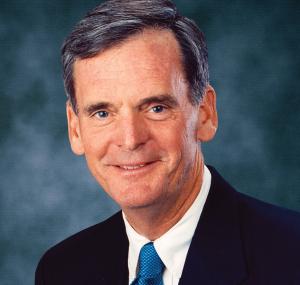Learning from the tragedy of Vermont Yankee.
Former U.S. Senator Judd Gregg (R-N.H.) is co-chairman of Nuclear Matters, a campaign designed to engage and inform policymakers and the public about the need to preserve existing nuclear energy plants.
The end of 2014 marked a sad moment with the closure of the Vermont Yankee nuclear energy plant. A lifeline for many in the communities it served, including Vernon, Vt., and parts of New Hampshire and Massachusetts, Vermont Yankee's closure is indicative of a problem that nuclear plants across the country currently face. Too many well-functioning nuclear energy facilities - most of which have decades of safe, useful operating life remaining - are at risk of closure or have announced their early retirement.

These closures are due not to the economic fundamentals of nuclear plants, but rather the unintended consequences of poorly designed market structures and government policies. Looking ahead, regulators, policymakers and industry should keep in mind the impacts of Vermont Yankee's shutdown - which will spread far and wide - and should do everything they can to prevent further premature nuclear closures. The reliability of the electric grid and the well-being of electricity consumers, the environment, employees, and communities across the country depend on it.
First, the benefits: Vermont Yankee contributed more than $60 million to the local economy each year. And, since 2002, having the facility on-line saved New England customers approximately $330 million in electricity rate savings compared to the price of purchasing that same power from the spot market. Said another way, this plant was producing energy at less than five cents per kilowatt-hour, while the energy that replaces it will cost roughly three times that given that the regional average is 17.67 cents per kWh. These costs will, over time, prove a burden for ratepayers across the region, especially low-income families.
Next, over the years, Vermont Yankee also prevented more than 50 million tons of carbon dioxide and other pollutants from being released into the environment. This is especially noteworthy as officials from New England's grid operator have indicated that the energy from Vermont Yankee will likely be replaced by other, carbon-emitting fuels. Finally, this closure means that hundreds of jobs will have been lost, with company officials announcing that in February 2015, the plant's staff will be reduced from about 550 employees to 316, with subsequent cuts planned after that.
Vermont Yankee was the norm rather than the exception in terms of the many benefits it provided. In 31 states across the country, existing nuclear energy plants generate reliable, carbon-free energy, and drive jobs and economic growth. In fact, nuclear energy provides one-fifth of the country's power. It is the most efficient and reliable source of large-scale, around-the-clock electricity, meaning it is available on the grid at all times.
In 2013, nuclear plants accounted for 63.3 percent of America's total carbon-free energy - more than all other clean-energy sources combined. Put simply, meeting state and national carbon reduction goals, including the Environmental Protection Agency's proposed 111(d) rules, will be difficult or impossible to do without nuclear.
In addition, nuclear energy plants provide 100,000 well-paying jobs, not to mention a plethora of secondary benefits and the fact that a diverse energy mix, including nuclear, remains critical to ensuring cost-effective electricity prices for consumers.
So now comes the logical question: Why, despite these benefits, are nuclear energy plants shutting down before their useful life is up, and particularly at a time when our nation is placing a premium on carbon-free electricity generation? As the Vermont Yankee situation illustrates, certain aspects of electricity market structures and government policies are producing unintended results, forcing nuclear plants to close even when their underlying economic fundamentals are still strong. The problem is real. Other plants have either already shut down - Kewaunee in Wisconsin, for example - or are facing a similar situation and will soon need to make a decision about whether to remain open.
Potential solutions to this problem vary by region and jurisdiction, but the bottom line is that existing nuclear energy plants must be better recognized in electricity markets for the value that they provide. Possible fixes include new legislative, regulatory and/or competitive market policies that recognize existing nuclear energy plants for their zero-carbon and electric system reliability. New emphasis should also be placed on enabling the rapid development of electric transmission capacity to better link existing nuclear energy plants to markets.
Fortunately, we are beginning to see policymakers and companies work together to determine the best path forward for the long-term reliability of the electric grid and for consumers. For example, a recent proposal filed by the PJM market monitor with the Federal Energy Regulatory Commission increases the value of reliable energy resources, a positive step forward for acknowledging nuclear's value as an "always-on" electricity source. And in Illinois, a resolution was introduced that recognizes the importance of urgently addressing the problems affecting nuclear energy plants in the state. However, there is still much more work to be done.
Signs of stress in our country's reliable electricity grid, like Vermont Yankee's closure, cannot be ignored. As New England experiences the brunt of another frigid winter, it does so at a disadvantage. Reliability challenges will only be exacerbated by Vermont Yankee's closure, especially considering that nuclear performed at a much higher capacity factor than any other fuel source during last year's Polar Vortex.
Premature nuclear plant closures should be a thing of the past. I urge all stakeholders to work together to ensure that nuclear energy is properly valued as a reliable, affordable and carbon-free electricity resource that is essential to America's energy future and diverse fuel mix.



